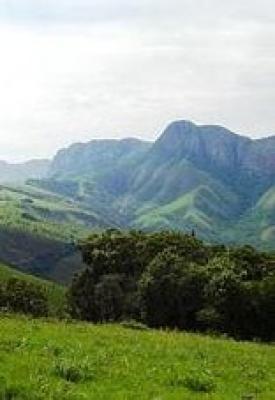The scenically delightful 22 000-ha Wolkberg Wilderness Area is situated approximately 80 km south-west of Tzaneen. The 2 127-m Wolkberg, part of the northern Drakensberg and Strydpoort ranges, with its great, vertical quartzite krantzes, countless kloofs, cool, deep and densely forested ravines, massive buttresses and folded and interlocking spurs, was appropriately proclaimed a wilderness area in 1977.
The 'cloudy mountain', a valuable catchment area, produces dear, silt-free water. Many streams in steep ravines flow to the Mohlapitse River, a tributary of the Olifants. The entrance to this river is through a magnificent gorge flanked by perpendicular, aloe-covered cliffs.
Smaller branches of the Letaba River, the Thabina and the Letsitele, also originate in the Wolkberg. These rivers, with their sensational waterfalls and potholes in dolomitic rock below the black quartzite layer, are refreshing after a long, tough hike.
The steep, quartzitic cliffs of the Black Reef Series provide impressive landmarks. Serala (Krugerkop), at 2 050 m the highest peak in the Wolkberg, is neighboured by Steilkoop (1 900 m), Marake (1 790 m) and Tandberg (also called the Knuckles or the Apostles), a well-known feature.
Although hikers, who will be called upon to exert a medium to high fitness level, are free to travel anywhere within the wilderness, the Officer-in-charge warns that only physically competent and agile rock climbers should venture on the route from the Serala plateau over Kruger se Neus through Wonderwoud Forest and over the Tandberg as some steep scrambling is required.
The indigenous high forest pockets found in deep, wet valleys host species such as the Outeniqua and real yellowwoods, wild fig, lemonwood, wild peach and Cape beech. Hikers have a chance of seeing klipspringer, grey rhebok, mountain reedbuck, duiker, bushbuck, genet, otter,the noctumal caracal and vervet and samango monkeys, and if extremely lucky, leopard and brown hyaena.
The Wolkberg is rich in birdlife; the hamerkop, bat hawk, black eagle, lilac-breasted roller, blackcollared and pied barbets, pearlbreasted swallow and crested francolin are all present.
